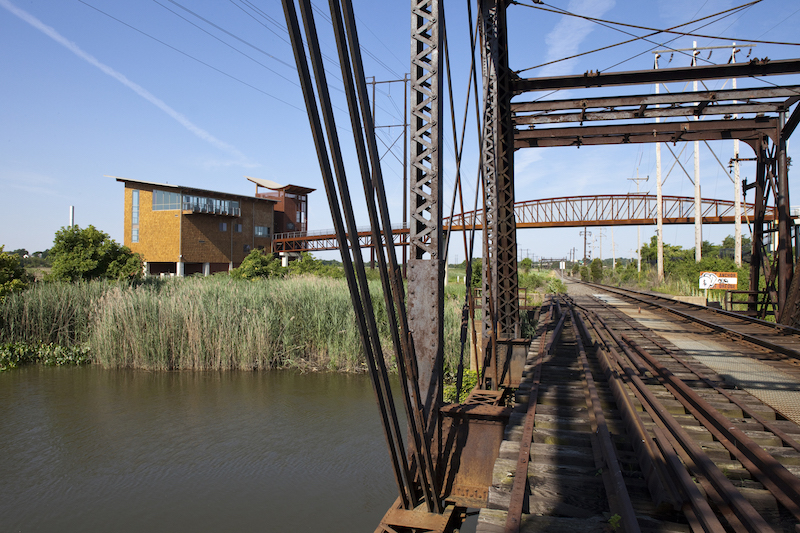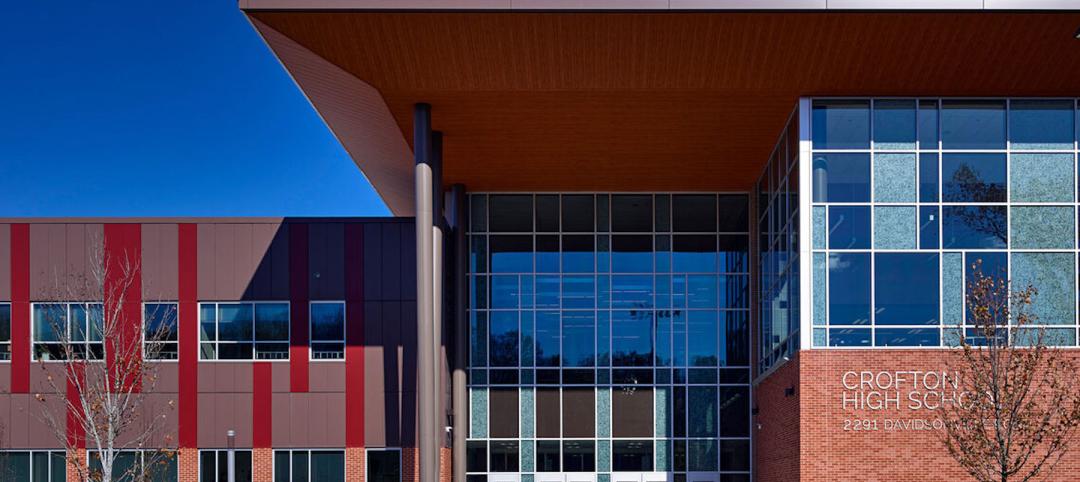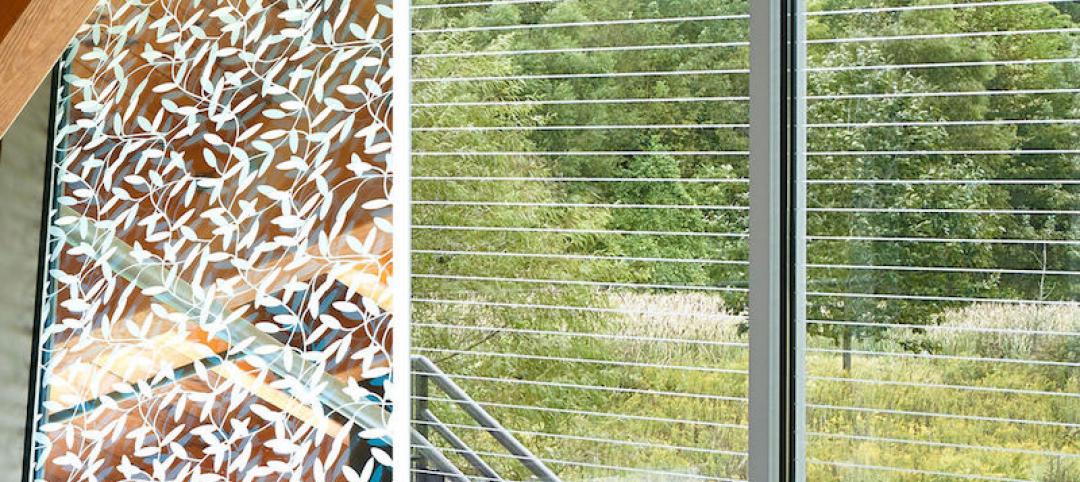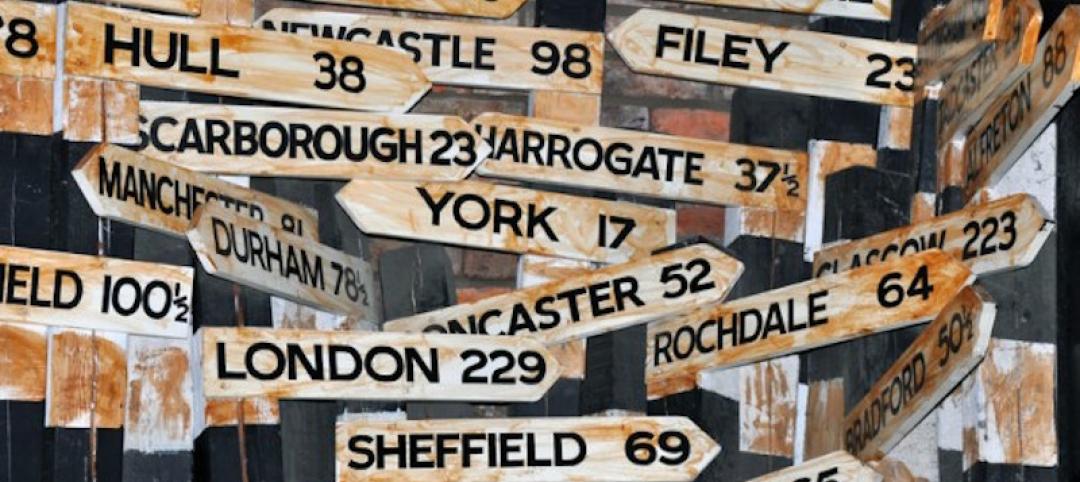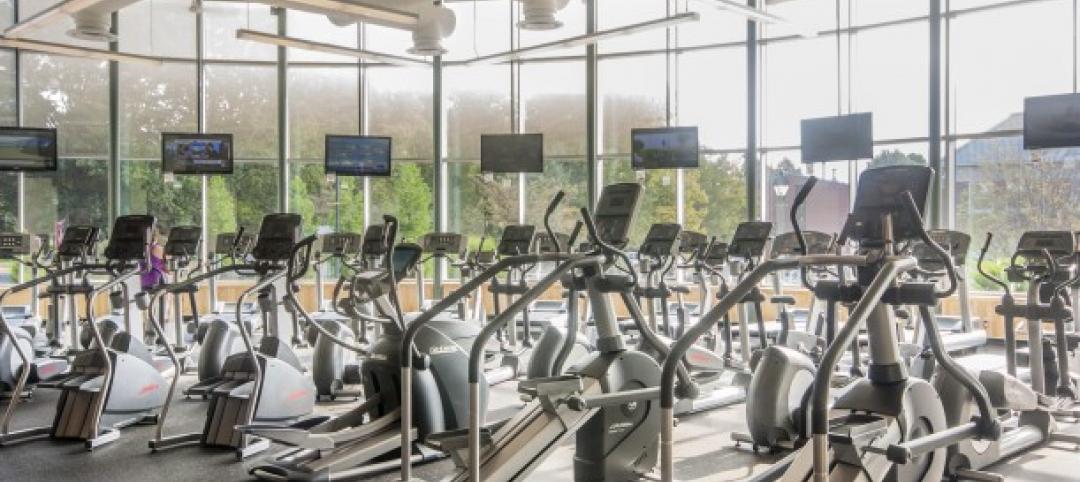In 1956, the National Park Service began a 10-year initiative, known as Mission 66, to improve the conditions surrounding many National Parks, which were experiencing a boom in attendance after World War II. During this time, the modern interpretive center was born as over 100 were constructed as part of the program. The common approach at the time was to site the building as close as possible to, if not on, the resource. An example of this is the Visitor Center at Gettysburg National Military Park, also known as the Cyclorama Building. The modernist building was purposefully sited directly on North Cemetery Ridge—the location of one of the Civil War’s bloodiest battles—and intended to serve as a bridge connecting past and present. Since then, the thought process has changed to allow visitors to experience the resource as it stands (or stood) without the distraction of modern interventions. For the Cyclorama, that meant it would be razed in 2013 in order to restore the landscape to its 1860s state.
In our experience, thoughtful site selection is never about one factor, but rather a confluence of several components that ultimately present trade-offs for the owner. When evaluating a site for a new building, there are several questions to ask.
— What are you interpreting? Is it a natural feature, a historic event or place, an artifact (built or unbuilt), or is it related to material culture, etc? The subject of interpretation typically plays a critical role in site selection.
— Aside from providing functional space, what role does the architecture play? Depending on the resource, story and mission, the building could range from a clear iconic destination to a more subdued “non-building” allowing the resource to attract one’s full attention.
— What is the current infrastructure? How are your visitors going to get to your site? Are there existing access roads and parking? Are there pathways? Where are the current utilities and other services located? Are you willing to make changes to the current infrastructure in order to build on the most appropriate site?
— What level of sustainability is desired? All buildings should be designed sustainably, however the highest levels (Net Zero, LEED Platinum, and Living Building Challenge) tend to have a bigger impact on site location and orientation.
— What is the budget? For a program to be meaningful, all design decisions must be grounded in the reality of the budget.
While the answers to these questions may seem straightforward, selecting a site that balances these factors without compromising the interpretive mission of an institution can require a bit of creativity and compromise, especially when it comes to managing costs.

A good example of this process can be seen in the preferred siting of the DuPont Environmental Education Center(pictured above), located in Wilmington, Delaware. The building is intended to memorialize the contributions that Russell Peterson, former governor of Delaware and president of the Audubon Society, made to society and interpret one of his proudest achievements—the Russell W. Peterson Urban Wildlife Refuge. Through a detailed site selection process that embraced the above factors, it was determined that the best location for the center was directly adjacent to the wildlife refuge as opposed to a more remote location initially identified by the client. The building has an iconic presence, much like that of Russell Peterson, and poses a clear destination from Wilmington’s River Walk, while providing an elevated platform to take in and interpret the expanse of the refuge. This location also affords an optimal solar orientation and solves a multitude of site safety and infrastructure issues associated with the original site.
Taking the time to consider these questions in the beginning of the design process, preferably as part of programming or a site selection study, can help to make sure that your building is appropriately sited to reinforce the mission of your institution.
More from Author
GWWO | Jan 8, 2024
Achieving an ideal visitor experience with the ADROIT approach
Alan Reed, FAIA, LEED AP, shares his strategy for crafting logical, significant visitor experiences: The ADROIT approach.
GWWO | Jan 18, 2023
Building memory: Why interpretive centers matter in an era of social change
The last few years have borne witness to some of the most rapid cultural shifts in our nation’s long history. If the experience has taught us anything, it is that we must find a way to keep our history in view, while also putting it in perspective.
GWWO | Aug 17, 2022
Focusing on building envelope design and commissioning
Building envelope design is constantly evolving as new products and assemblies are developed.
GWWO | Aug 5, 2022
A time and a place: Telling American stories through architecture
As the United States enters the year 2026, it will commence celebrating a cycle of Sestercentennials, or 250th anniversaries, of historic and cultural events across the land.
GWWO | Feb 7, 2019
Designing for the birds is not just for the birds
We’ve all seen it. A dead bird laying on the sidewalk next to a building. Or, maybe we’ve heard it. The loud bang of a bird flying into your window.
GWWO | Jul 6, 2017
Achieving an ideal visitor experience: The ADROIT approach
The most meaningful experiences are created through a close collaboration between architects, landscape architects, and exhibit designers.
GWWO | Mar 1, 2017
Intuitive wayfinding: An alternate approach to signage
Intuitive wayfinding is much like navigating via waypoints—moving from point to point to point.
GWWO | Mar 13, 2014
Do you really 'always turn right'?
The first visitor center we designed was the Ernest F. Coe Visitor Center for the Everglades National Park in 1993. I remember it well for a variety of reasons, not the least of which was the ongoing dialogue we had with our retail consultant. He insisted that the gift shop be located on the right as one exited the visitor center because people “always turn right.”
GWWO | Dec 19, 2013
Mastering the art of crowd control and visitor flow in interpretive facilities
To say that visitor facility planning and design is challenging is an understatement. There are many factors that determine the success of a facility. Unfortunately, visitor flow, the way people move and how the facility accommodates those movements, isn’t always specifically considered.
GWWO | Nov 7, 2013
Fitness center design: What do higher-ed students want?
Campus fitness centers are taking their place alongside student centers, science centers, and libraries as hallmark components of a student-life experience. Here are some tips for identifying the ideal design features for your next higher-ed fitness center project.

